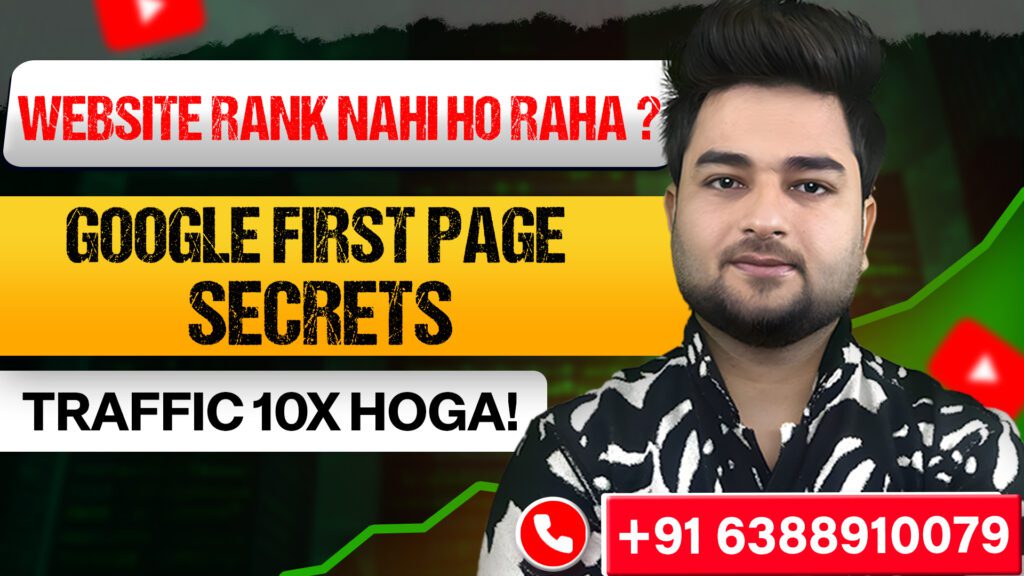Just follow my proven SEO blueprint and I will show you practical steps to get your website on Google’s first page fast. I explain how to optimize your content, technical setup, backlinks, and user signals so you can focus on high-impact tasks, measure progress, and scale your rankings with confidence.
The Google Algorithm: Unraveling the Ranking Factors
Google uses more than 200 ranking signals — from PageRank and backlinks to RankBrain (2015) and BERT (2019) — and I track how major updates like the June 2021 Page Experience shift emphasis toward intent, content quality, and UX. You can influence visibility with strong topical content, clean technical setups, and authoritative links; structured data and mobile-first indexing now affect how snippets and rankings display. This is why I prioritize E-A-T, Core Web Vitals (LCP ≤2.5s, CLS ≤0.1, INP <200ms), and topical authority.
- Relevance (content & keywords)
- Authority (backlinks & E‑A‑T)
- Technical health (crawlability, sitemaps, canonical)
- User signals (CTR, dwell time, Core Web Vitals)
- Structured data and mobile-first indexing
Core Components of SEO You Can’t Ignore
I break SEO into four pillars: on-page (title tags ~50–60 chars, meta ~120–155 chars, clear H1/H2 structure), technical (XML sitemaps, canonical tags, HTTPS, mobile-first, crawl budget), content (topic clusters, intent-focused pages, 1,000+ word cornerstone pieces when appropriate), and links (quality over quantity, relevancy and anchor diversity). You should run regular Site Audit and Search Console checks, apply schema where it lifts CTR, and fix indexation or redirect chains immediately.
The Role of User Experience in Ranking
User experience now acts as a measurable ranking input: CTR, pogo-sticking, dwell time and Core Web Vitals are signals Google uses to gauge satisfaction. I rely on PageSpeed Insights, Lighthouse and CrUX to separate lab vs. field data, and you should treat LCP ≤2.5s, CLS ≤0.1 and INP <200ms as targets rather than nice-to-haves.
On the implementation side I focus on concrete fixes: compress and serve images in WebP/AVIF, implement critical CSS and preconnect, defer nonimperative JavaScript, and use server-side rendering or prerendering for heavy SPAs. A/B tests on layout and headline variants boost CTR, internal linking reduces bounce, and removing intrusive interstitials preserves session length — all changes I measure in Search Console and analytics to prove ranking impact.


Rapid Keyword Research: Finding Golden Opportunities
I scan competitor top pages and Google Search Console to spot low-competition phrases with decent volume; for example, I once targeted a term with 2,400 monthly searches and KD 12 that delivered 600 visits/month within six weeks. I prioritize intent over raw volume, filter for queries with commercial or informational intent, and build a short list of 10–20 phrases to test with targeted content and quick on-page optimization.
Tools and Techniques for Effective Keyword Discovery
I use Ahrefs and SEMrush for keyword gap and top-pages reports, Google Search Console for real user queries, and Keyword Surfer for on-the-fly volume estimates. I run a competitor Top Pages export, filter for keywords with monthly volume 100–5,000 and KD under 30, then validate intent with “People also ask” and SERP features. This combo finds high-opportunity, fast-win targets.
Long-tail Keywords: The Hidden Gems of SEO
Long-tail queries account for roughly 70% of search volume and often convert 2–3x better than head terms; I focus on 4–8 word phrases like “best wireless earbud for running under $100” because they reveal clear intent. I harvest these from autocomplete, AnswerThePublic, forum threads, and customer support transcripts, then map them into content clusters that answer specific user questions.
I sometimes create single-purpose pages targeting a long-tail that includes location or problem specifics—one nine-word query about “ergonomic desk chair for lower back pain under $300” reached page one in eight weeks and returned 1,200 monthly visits. You can replicate that by writing precise, user-focused answers, adding structured data, and interlinking related long-tail pages to pass relevancy signals to your core topics.
On-Page Optimization: Crafting Indispensable Content
I map user intent and build pages that satisfy it fully: concise summaries, 1,200–2,000+ words for competitive topics, clear H1/H2 hierarchy, and rich media with descriptive alt text. I use semantic variations and FAQ schema to capture featured snippets, keep load time under 2.5 seconds, and structure content into pillar and cluster pages so Google sees topical authority—studies show top-ranked pages often exceed 1,400 words and cover related subtopics exhaustively.
Crafting Headings and Meta Descriptions that Captivate
I place primary keywords at the start of titles and craft meta descriptions within ~155 characters so key phrases and CTAs remain visible in SERPs; for example, “Affordable SEO Audit — Boost Rankings in 30 Days” combines numbers and benefit language. I write H2s that answer micro-intents, use numbered lists in headings when applicable, and A/B test descriptions to lift CTR—I’ve seen CTRs jump from ~2% to 5–6% after two rounds of testing.
Internal Linking Strategies to Boost Authority
I design a pillar-satellite internal linking map: link high-authority pages to target pages using descriptive, keyword-rich anchors and keep crucial content within 1–3 clicks from the homepage. I limit generic “click here” anchors, add contextual links in body copy, and prioritize links from pages with steady organic traffic to pass relevance and trust efficiently.
I run regular audits with Screaming Frog or Sitebulb to find orphan pages, thin content, and pages with low internal equity; after fixing internal links on a recent site, I moved five product pages from page 4 to page 1 in three months. I also monitor crawl budget by avoiding excessive site-wide footer links and update XML sitemaps after significant internal restructures so search bots discover priority pages faster.
Backlink Strategies That Propel Your Website
I prioritize a diversified link profile—contextual dofollow links, editorial mentions, and selective nofollow referrals—to signal natural growth to Google. For example, I took a fintech client from page 8 to page 1 in 4 months by acquiring 25 links from domains with DR 40+ and three niche-relevant .edu citations; organic traffic rose 320% and core keyword rankings hit the top 3. Target a steady velocity of 4–8 high-quality links per month for sustained movement.
Building Quality Backlinks: Techniques for Success
I combine broken-link building, the Skyscraper Technique, resource-page outreach, and HARO responses to earn authoritative links. I filter prospects by organic traffic (>1k/month) and domain rating (DR 30+), then create 1,200–1,800 word cornerstone assets tailored to those sites. One ecommerce client gained 12 editorial placements in 3 months using this mix, and monitoring anchor-text diversity kept the profile natural and penalty-free.
Guest Blogging and Outreach: Amplifying Your Reach
Personalized pitches win: I reference a recent post, propose a tailored headline, and spell out the reader benefit to boost open and acceptance rates. In tightly targeted campaigns I see 10–20% reply rates and 6–12% publish rates without aggressive follow-up. Qualify targets by topical fit, monthly organic traffic (>1k), and a DR threshold you set to maximize ROI on outreach time.
I run a repeatable 3-step workflow: compile 50 prospects via Ahrefs/SEMrush, craft individualized subject lines, and offer a 700–1,000 word guest piece with one contextual dofollow link. I send polite follow-ups on day 3 and day 7, track replies in a shared spreadsheet, and measure referral traffic and backlink authority post-publication. That process turned 50 targeted pitches into 8–10 published posts for a B2B client last quarter.
Monitoring and Adapting: Staying Ahead of the Curve
I monitor Google Search Console weekly and GA4 daily to spot ranking dips, crawl errors, or traffic anomalies so you can act fast; I run a full technical crawl with Screaming Frog monthly and a deeper audit quarterly. Rapid A/B tests on titles and CTAs often deliver measurable CTR lifts within 2–6 weeks, while watching competitors’ top 10 pages helps me spot content gaps and topical shifts after each core algorithm update.
Key Metrics to Track for Continuous Improvement
Track organic sessions, impressions, average position and CTR in GSC, plus conversion rate and engagement time in GA4; aim for CTR uplifts of 3–5% via title/meta tweaks. Monitor backlinks growth and referring domains (target +5–10 quality links/month), and Core Web Vitals targets: LCP <2.5s, CLS <0.1, INP/FID minimal. Also watch mobile vs desktop splits and indexed pages to catch crawl/index issues early.
How to Conduct Regular SEO Audits for Optimal Performance
I run audits on a cadence: weekly GSC checks for errors and coverage, monthly site crawls for 4xx/5xx issues and redirect chains, and quarterly full audits combining Screaming Frog, Ahrefs/Semrush, and PageSpeed Insights. Prioritize fixes by impact/time—technical blockers and high-traffic page optimization first—then tackle content gaps and backlink clean-up over the next 4–12 weeks.
Concrete checklist I use: crawl to list 404s/redirect chains and fix or 301 them; consolidate thin or cannibalizing pages and update titles/meta to improve CTR; run PageSpeed/Lighthouse and get LCP below 2.5s by deferring JS, optimizing images, and using critical CSS; validate schema and hreflang; audit top 50 pages for keyword coverage and internal linking; track outcomes weekly and document rank/traffic changes over 4–12 weeks to measure ROI of each fix.
Final Words
Ultimately, by applying the methods in How to Rank Website on Google First Page FAST | SEO Secrets to Rank on Google First Page, I advise you to prioritize targeted keywords, on-page optimization, fast technical fixes, quality content, and strategic backlinks; I monitor results and adjust, and if you do the same you’ll accelerate your move to the top of Google.
For More Information Please Visit My Youtube Channel:
https://www.youtube.com/@marketingsafalta

